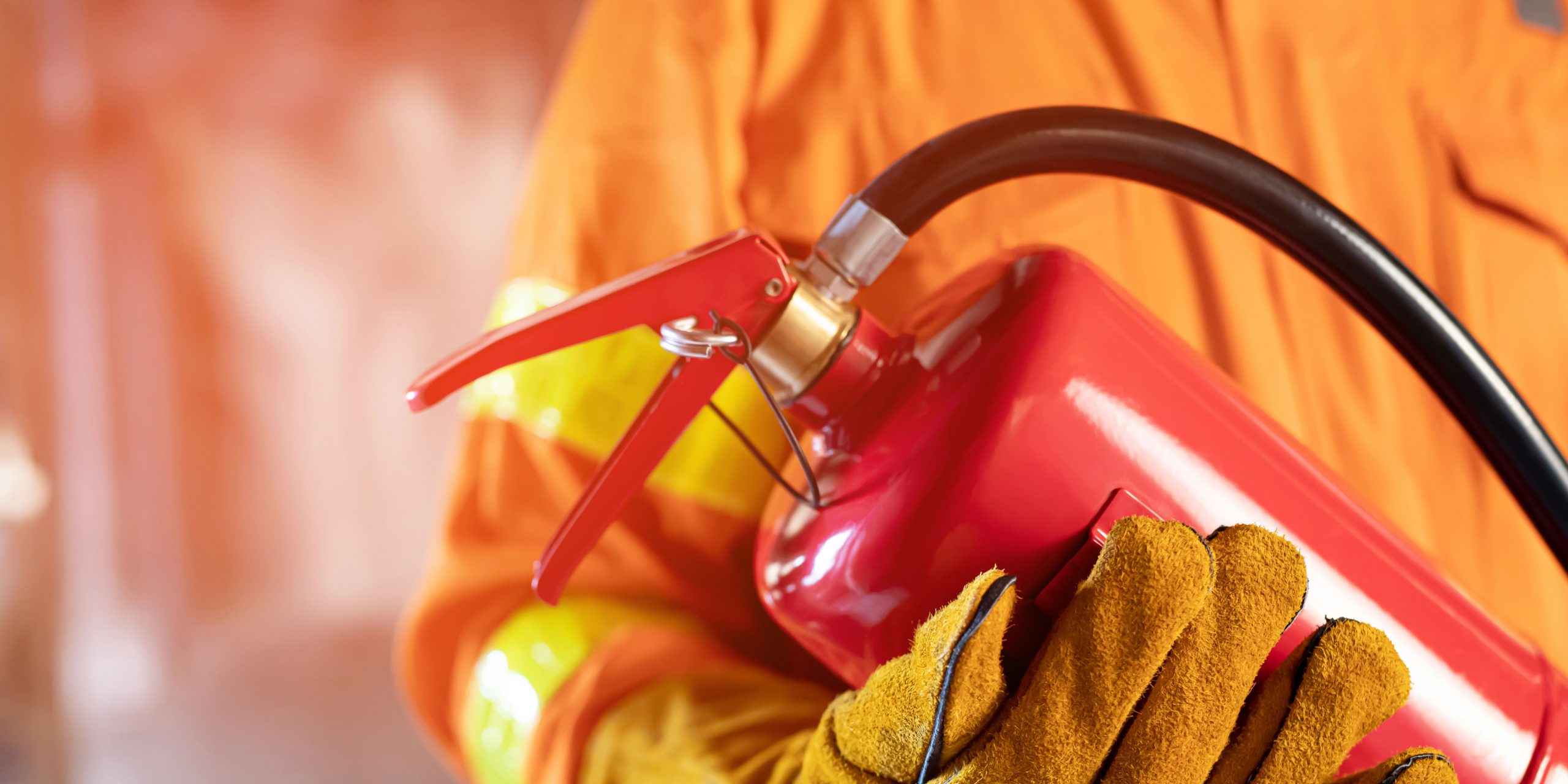
Fire can have a devastating impact on the university campus, including immediate danger to people and the physical university environment as well as long term impact to research, teaching and university operations.
The BC Fire Code and Occupational Health and Safety legislation requires us to have emergency procedures and building fire safety plans and to ensure that faculty, students and staff are trained in how to prevent and respond to a fire event.
Key Elements of the Fire Safety Program
Fire Safety Plans (FSP)
Each building on campus has a unique Fire Safety Plan. These plans are reviewed by Kelowna Fire Services and contain Emergency Procedures Maps and identify prevention and response expectations. Each member of the campus community should take a moment to familiarize themselves with the Emergency Procedures Maps and evacuation instructions that are posted in their immediate work areas.
For new buildings the project manager needs to develop a Fire Safety Plan using the UBCO template here.
For buildings that are being substantially renovated, the project manager should contact HSE who will provide a copy of the building’s current Fire Safety Plan. The project manager is responsible for making the associated changes and updating the building’s Emergency Procedure Maps.
Supervisory Staff (Emergency Directors and Fire Wardens)
HSE recruits and trains fire Supervisory Staff for each campus building. These positions support local fire prevention activities (inspections) and direct building occupants in case of a building evacuation. If you are interested in becoming a Building Emergency Director or Fire Warden, please email hse.ok@ubc.ca
Fire Drills
UBCO conducts fire drills as required by the Fire Code. For the most part, these drills include alarm-based evacuations aimed at familiarizing building occupants with the sound of the building alarms, evacuation procedures and locations of the appropriate designated assembly points. Typically these drills occur in September, in order to capture occupants that are new to buildings. Drills may also occur in January in situations where there are large numbers of new occupants in a building.
Fire drills are performed for all campus buildings, including research, academic and residential spaces.
Fire Alarms
Building occupants should be familiar with their building’s Fire Alarm, many of which have a different tone, pitch and frequency.
Training
Fire Extinguisher Training
HSE offers an online Fire Extinguisher course and, as needed, in-person Fire Extinguisher training. Please see hse.ok.ubc.ca/safety/training/ for more information.
Supervisory Staff Training
HSE offers online and in-person training to Emergency Directors and Fire Wardens. If you are interested in becoming a Building Emergency Director or Fire Warden, please email hse.ok@ubc.ca
Systems
Fire protection systems are required for all campus buildings. Facilities Services is responsible for the installation, operation, testing and ongoing maintenance of Life Safety systems in all buildings according to the current BC Fire Code Regulation and other applicable regulatory requirements.
Inspections
Supervisory Staff and the Joint Occupational Health and Safety committees inspect building areas for accumulation of flammable materials and other fire risks, however any member of the UBC community who observes a fire risk should report the risk to hse.ok@ubc.ca, or campus security at 250.807.8111 (78111) if it is an immediate concern.
Storage
UBC employees, students and contractors area asked to be diligent in adhering to appropriate housekeeping practices. It is particularly important to not store flammable materials in a manner that could create or promote a fire or in locations that could prevent the evacuation in an alarm situation. Storage of flammable materials should be minimized.
Hot Work
Any hot work that is performed indoors requires a permit. The permitting process ensures an assessment for the potential for fire and any identified impact to the normal operation of the Fire Protection Systems. Please see here for more information.
HSE maintains up to date emergency procedures and information for the University community. The Emergency Procedures and Information website can be viewed at emergency.ok.ubc.ca and is the official University site for campus emergency procedures, emergency contacts and phone numbers, and resource information. Click here for a direct link to the Fire Response information
The purpose of the Hot Work & Dust Program is to protect personnel and property at UBC Okanagan from a fire caused by hot work or dust production. Hot works refers to work that involves open flames or work that produces heat, sparks or dust that may affect the fire alarm system. Such operations include but are not limited to welding, soldering, brazing, cutting, coring, grinding, adhesive bonding, thermal spraying, riveting, chipping and thawing pipes.
This procedure defines the responsibilities and requirements for performing hot work and establishes controls through the use of a hot work permit and checklist which must be completed prior to work commencement and submitted to the Facilities Management as well as the Health, Safety and Environment office. It establishes the means to assess the work area and the planned hot work activity to ensure sufficient and necessary controls are in place to prevent a fire. Hot work will only be performed in areas that are or have been made fire safe.

